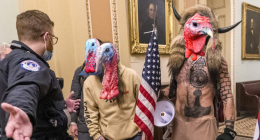CHECK THE DATE OR THIS ARTICLE WILL SEEM WEIRD
On Friday, March 29, the state-run media of North Korea announced that missiles are on standby to strike the United States and South Korea, as ordered by North Korean leader Kim Jong-Un.
The White House is taking North Korea’s threats of nuclear attack seriously, according to Secretary of Defense Chuck Hagel. There are 26 existing missile interceptors at Fort Greely, Alaska, and the U.S. will add about half that amount of interceptors at the launch site, Hagel said.
Although the U.S. is not ignoring the threats, spokespeople from the Pentagon have expressed confidence in the safety of the nation. “The United States is fully capable of defending itself and our allies,” said Army Lt. Col. Catherine Wilkinson of the Department of Defense. “North Korea’s bellicose rhetoric and threats follow a pattern designed to raise tensions and intimidate others.”
However, “What is not normal is that the backdrop for this is about a year of very unpredictable behavior by a new leadership, and a sequence of provocations that is more concentrated over a period of time than we have seen in the last 20 years,” said Victor Cha, director of Asian Studies at Georgetown University and former director for Asian affairs at the National Security Council in an interview with CNN.
Pyongyang, the capital of North Korea and the location of recent decision-making meetings among the leadership of the country, issued a warning Saturday that the Korean peninsula was in a state of war.
A chart depicting North Korean missiles hitting major U.S. cities appeared in a photo released by the North’s Korean Central News Agency.
“South Korean and American intelligence authorities are closely watching whether North Korea is preparing its short, medium, and long-range missiles, including its Scud, Rodong and Musudan,” said spokesman of the South Korean Defense Ministry Kim Min-seok.
North Korea’s threats occurred about a month after Park Geun-Hye became South Korea’s first female president, and according to CBC News, the threats are seen as an attempt to change Seoul’s policies toward Pyongyang.





